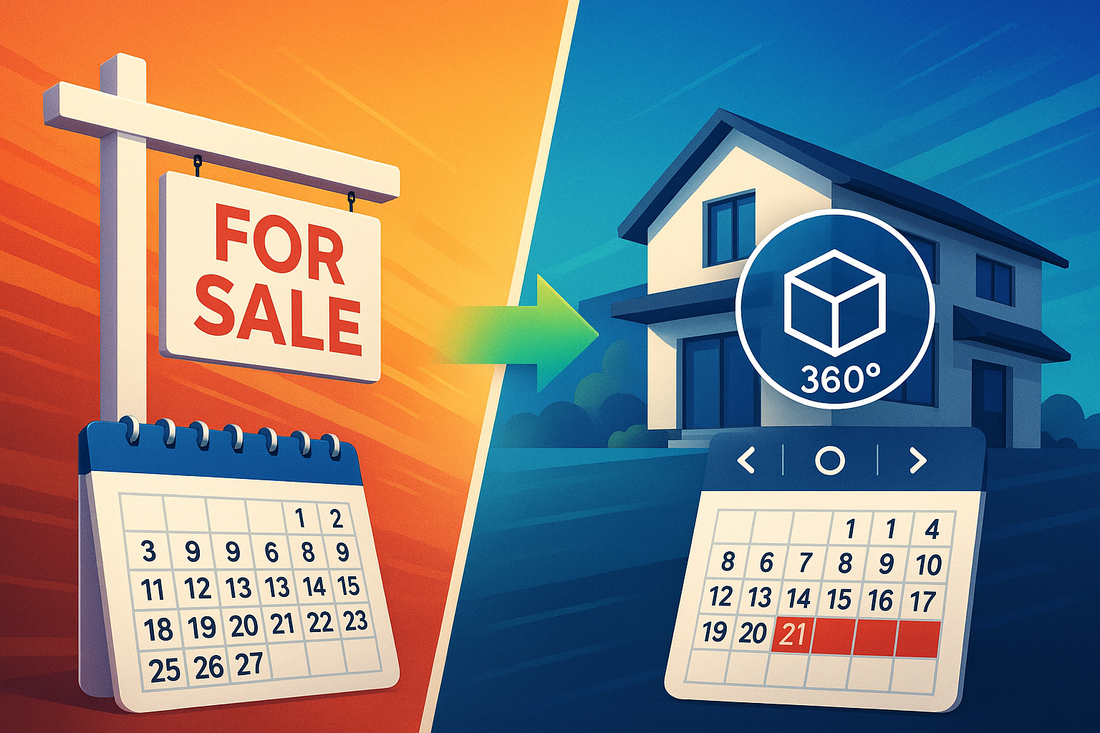
Case Study: How Virtual Tours Cut Time-on-Market in Half
Share
In the fast-paced real estate market, selling a property quickly is often just as important as selling it at the right price. Extended time-on-market can reduce a home’s perceived value and increase carrying costs for sellers. One tool that has proven highly effective in accelerating sales is the virtual tour—an immersive digital experience that allows buyers to explore properties online as if they were walking through them in person.
Let’s examine a real-world case study that demonstrates how virtual tours can cut a property’s time-on-market in half, while attracting serious buyers and maximising sale potential.
Background: The Challenge
A mid-sized suburban property had been listed traditionally with professional photos and physical staging. Despite these efforts, the home lingered on the market for 60 days, well above the local average.
Key challenges included:
-
Limited engagement with online listings.
-
Buyers are hesitant to schedule in-person visits without a better understanding of the property.
-
Competition from other listings using interactive or high-tech marketing tools.
To address these issues, the listing agent implemented a comprehensive virtual tour strategy.
Implementation: Creating the Virtual Tour
1. 3D Scanning and Photography
Using advanced 3D cameras, the entire home was digitally scanned. Every room, hallway, and detail was captured, creating a high-fidelity, navigable digital model.
2. Interactive Tour Design
The scans were converted into an interactive virtual tour accessible via desktop and mobile devices. Features included:
-
360° panoramic views of each room.
-
Clickable hotspots highlight key property features such as built-in appliances, flooring, and architectural details.
-
Guided walkthrough options for buyers who prefer a curated experience.
3. Marketing Integration
The virtual tour was embedded into the property listing, shared on social media, and included in targeted email campaigns. The agent also promoted it through paid digital ads to reach qualified local and out-of-town buyers.
Results: Faster Sales and Qualified Leads
Increased Engagement
Within the first week, the listing received triple the average number of views compared to previous photo-only listings. Users spent more time exploring the property, indicating deeper interest.
High-Quality Leads
By providing an immersive experience online, only genuinely interested buyers scheduled in-person visits. This reduced wasted showings and ensured that each appointment had a high likelihood of progressing toward an offer.
Reduced Time-on-Market
With the virtual tour in place, the property received multiple offers within 30 days, effectively cutting its time-on-market by 50%. The home ultimately sold above asking price, demonstrating that immersive digital experiences can drive both speed and value.
Why Virtual Tours Work
1. Immersive Buyer Experience
Virtual tours provide buyers with a realistic sense of layout, flow, and scale, helping them feel as if they are physically present. This immersion builds confidence and accelerates decision-making.
2. Convenience and Accessibility
Buyers can explore properties anytime, anywhere—whether they’re busy professionals, families, or international prospects. This convenience widens the pool of potential buyers.
3. Emotional Connection
Virtual tours allow buyers to visualize living in the space. Seeing rooms furnished and navigable digitally helps create a personal connection, increasing the likelihood of offers.
4. Competitive Advantage
Properties with virtual tours stand out online, signalling innovation and professionalism. This differentiation attracts attention, builds trust, and motivates faster action.
Broader Implications for Real Estate
This case study illustrates a larger trend: digital solutions are becoming essential in property marketing. Virtual tours:
-
Shorten selling timelines.
-
Improve the quality of leads.
-
Enhance the agent’s reputation and credibility.
-
Increase overall transaction efficiency.
Agents who adopt virtual tours consistently gain a competitive edge in the market, benefiting both sellers and buyers.
Final Thoughts
Virtual tours are more than a technological novelty—they are a strategic tool that transforms property marketing. By providing immersive, convenient, and emotionally engaging experiences, they enable faster sales, higher buyer confidence, and improved financial outcomes.
For sellers and agents, the message is clear: embracing virtual tours isn’t just an upgrade—it’s a necessity. In a competitive market where every day counts, the ability to cut time-on-market in half can make the difference between a listing that lingers and one that closes quickly, efficiently, and profitably.
